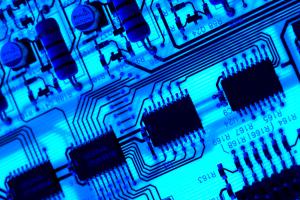Nano memory cloud Nano memory cloud made of nano carbon tubes (PhD in nano-microelectronics)
Researcher and author: Dr. ( Afshin Rashid)
Note: Making Nano memory cloud chips Nano super cloud is a memory made of carbon nanotubes, although the discovery of small but very strong, flexible and conductive carbon nanotubes with dimensions similar to DNA strands and the use of organic molecules Absorb microchlorophyll microcomputers instead of storage capacitors in nano-type memory chips. Nanocrystals, the use of which will increase the lifespan of nano-memory.
Nanoelectronics science and technology offer different super memory capabilities . Photofraction materials, for example, represent only one type of optical memory. In fact, using nanotechnology can increase the storage capacity of information by a thousand times or more. Data storage is a very important and necessary topic that can be done in various ways through nano-memory supercontrollers . One of the new data storage tools is the use of nickel quantum dots in nanometer sizes that are expected to be used to store terabytes of data. Due to the super -nano-memory, there is a high potential for activity in this field.
In electrical conductivity from a conductor to a semiconductor or an electrically changeable insulator, nanotubes depend on their molecular chiral structure and angle . Because carbon nanotubes are able to pass electric current through frictional electron ballistic transfer - this current is 100 times greater than the current flowing through copper wire - nanotubes are an ideal choice for making Nano chips. memory cloud Nano is a memory cloud .
Conclusion :
Making Nano memory cloud chips Nano super cloud is a memory made of carbon nanotubes, although the discovery of small but very strong, flexible and conductive carbon nanotubes with dimensions similar to DNA strands and the use of fine - grained organic molecules Absorb chlorophyll instead of storage capacitors in nano-type memory chips. Nanocrystals, the use of which will increase the lifespan of nano-memory.
Researcher and author: Dr. ( Afshin Rashid)
PhD in Nano-Microelectronics




